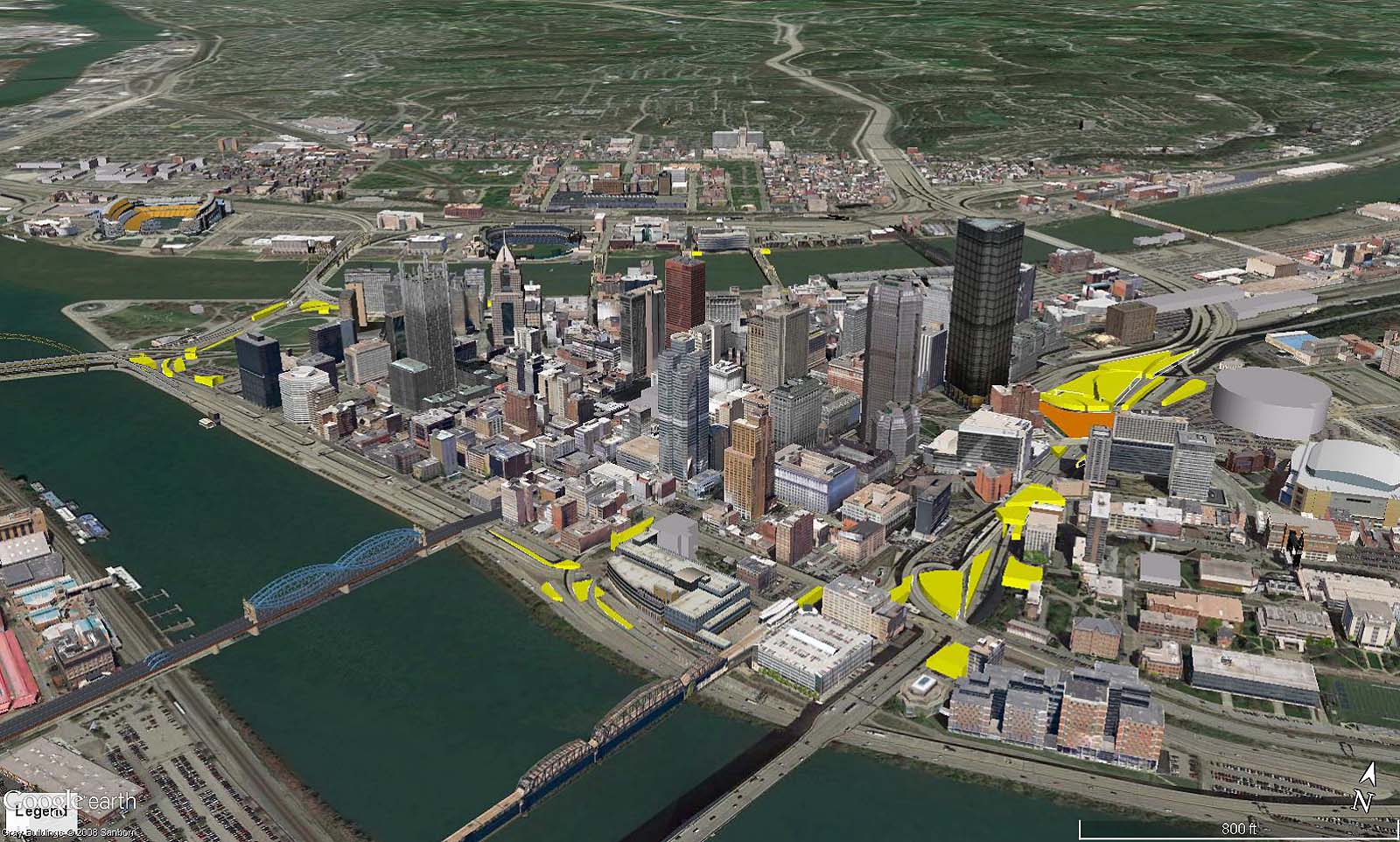We can improve the environment by increasing the population density of American cities[1],[2]. Our team is proposing a novel way to increase urban density: Underutilized spaces are tucked under bridges or trapped between traffic lanes around the city. Others are located in river flood planes, isolated on steep slopes, or hidden behind tall buildings. Our intent is to infill currently downtown spaces with housing.

Architects of this century must learn to recycle space in the same way we recycle our garbage – by finding value in waste. In the summer of 2016, on a volunteer basis, we spent hundreds of hours creating an inventory of unused downtown Pittsburgh spaces. Then we photographed the spaces and analyzed their locations, accessibility, constructability, site lines/views, sustainability potential, environmental impact, noise/smell, and preferred use. Finally, we determined the outlines of potential new structures, taking care to not interrupt any existing views from sidewalks, streets, or existing buildings. Remarkably, all but a few of the fifty-seven sites we studied can be built upon in some way without obstructing existing sightlines!
We are proposing that a percentage of these new housing units be made available to the homeless.[3],[4] Studies show that housing the urban homeless not only improves the urban experience of workers and residents, it also saves money in the long term.[5] It would be the height of irony: If we can convince the current property owners that our project has merit, we may be able to house the homeless in precisely the locations where they already live.
Here is our plan:
- Determine who owns the sites and arrange interviews.
- Conduct interviews seeking a site owner who, without making any commitments, would consider implementing the concept.
- Choose a site based on the interviews
- Create employment opportunities for young, local designers to create designs for the site
- Mentor these designers to develop high-level skills as they develop the design
- Engage an existing non-profit organization as a fiscal sponsor.
- Involve other Pittsburgh architects to design other sites
- Publicize the results in order to build public awareness.
Our goal is to improve Pittsburgh, the city where we live, and to provide a model that could potentially be put to use in cities around the world.
[1] Jane Jacobs, “The Death and Life of Great American Cities, 1961
[2] If half of all new homes built in the US over the next thirty years were concentrated in downtown areas, our county’s carbon consumption would decrease by as much as twenty-five percent as the result of minimizing automobile use and decreasing the size of new homes: Edward Glaeser, “Triumph of the City”, Pan Macmillan, 2011
[3] 71% of the homeless choose to reside in central cities: SAMHSA, “Current Statistics on the Prevalence and Characteristics of People Experiencing Homelessness in the United States”, 2011
[4] They make this choice because of access to mass transit, programs, shelters, and amenities not available in the suburbs: Homelessadvice.com, “Why do Homeless People Live in Cities?”, 2013
[5] “Hospitalization, medical treatment, incarceration, police intervention, and emergency shelter expenses can add up quickly, making homelessness surprisingly expensive for municipalities and taxpayers.” National Alliance to End Homelessness, “The Cost of Homelessness”, 2017
